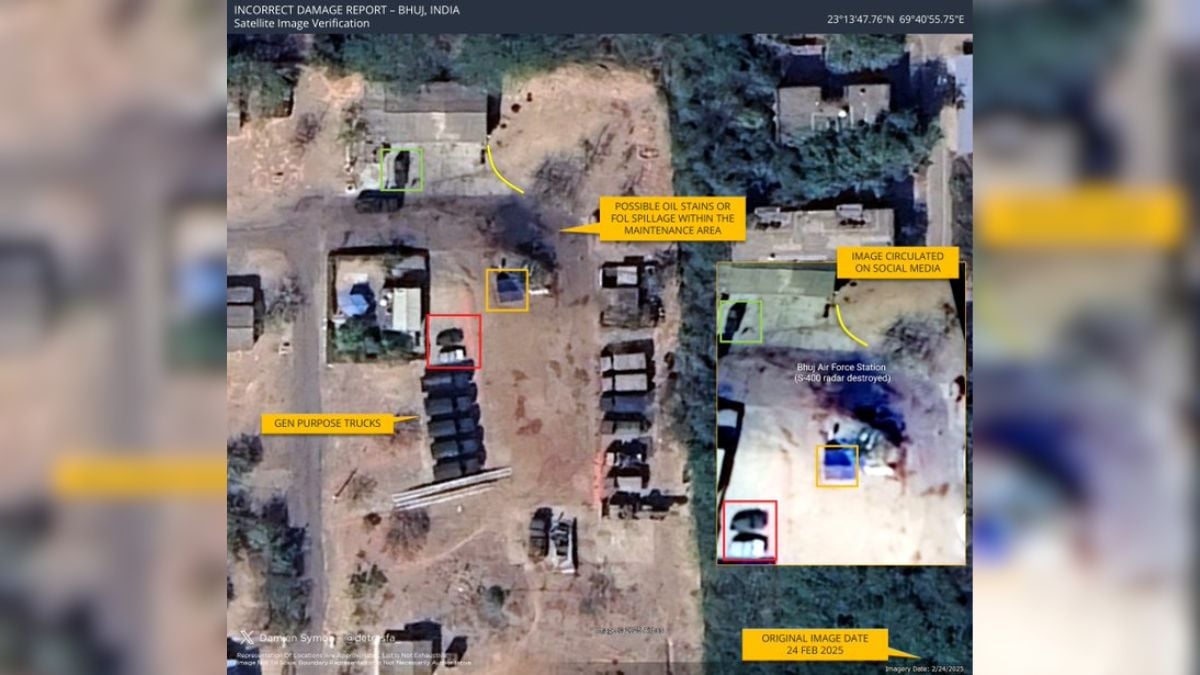

Following India's Operation Sindoor, Pakistan has been accused of launching a disinformation campaign involving fabricated claims of successful strikes on Indian airbases. These claims have been debunked by satellite imagery analysis and expert reviews, which reveal the use of doctored images and misrepresentation of routine maintenance as battle damage.
In the wake of Operation Sindoor, Pakistan allegedly attempted to project a counter-narrative of success by claiming to have hit Indian airfields and installations. According to reports, Pakistan has relied on doctored satellite images, fake visuals, and misinformation campaigns to support these claims. Instances include assertions of striking a Sukhoi-30MKI at Adampur airbase in Punjab and destroying an S-400 surface-to-air missile unit at Bhuj airfield in Gujarat.
Damien Symon, a top Open-Source Intelligence (OSINT) analyst, has played a central role in debunking these claims through detailed analysis of satellite imagery. Symon's analysis has revealed that Pakistan has used outdated images, misrepresented routine maintenance as battle damage, and even digitally altered images to create false impressions of damage.
One of the most prominent claims involved a supposed strike on a Sukhoi-30MKI fighter jet at Adampur airbase. Images circulated by Pakistani sources showed a jet near what appeared to be a burn mark. However, Symon's analysis of satellite imagery from March 2025, predating the conflict, revealed that the aircraft was a MiG-29 undergoing routine maintenance. The "burn mark" was identified as soot buildup from regular engine testing.
Another claim involved the alleged destruction of an Indian S-400 radar system at Bhuj airfield. Images showed dark patches on the ground, which Pakistani sources claimed were impact marks. However, these were identified as oil stains in a vehicle maintenance yard. Furthermore, the image was captured before the conflict began, further discrediting the claim. In another instance related to Adampur airbase, a satellite image was digitally edited to add black dots, mimicking bomb craters near the S-400 battery. Comparison with unaltered satellite images revealed that these marks were non-existent.
These debunked claims coincide with Operation Sindoor, India's military response to the April 22 Pahalgam terror attack. Launched on May 7, the operation targeted terror infrastructure in Pakistan-occupied Kashmir and Pakistan's Punjab province. In contrast to Pakistan's unsubstantiated claims, high-resolution satellite imagery has revealed extensive repair activity at Pakistani airbases, particularly Jacobabad and Bholari, following Indian airstrikes.
The Indian Air Force (IAF) operates a sophisticated and integrated air defense system. The core of this system is the Integrated Air Command and Control System (IACCS), which networks various sensors and communication systems to identify and target threats. The IACCS facilitates real-time information flow, enabling swift responses to airborne threats. The Indian Army's Akashteer system complements the IACCS by monitoring low-level airspace over battlefield areas.
India employs a multi-layered air defense network that includes Very Short-Range Air Defence Systems, Short-Range Air Defence Systems, and Medium-Range Surface-to-Air Missile systems. These systems are designed to protect against a wide range of aerial threats, including aircraft, UAVs, and cruise missiles. The S-400 Triumf system, with a range of up to 400 km, and the indigenously developed Akash-NG missile system, are key components of India's air defense capabilities.